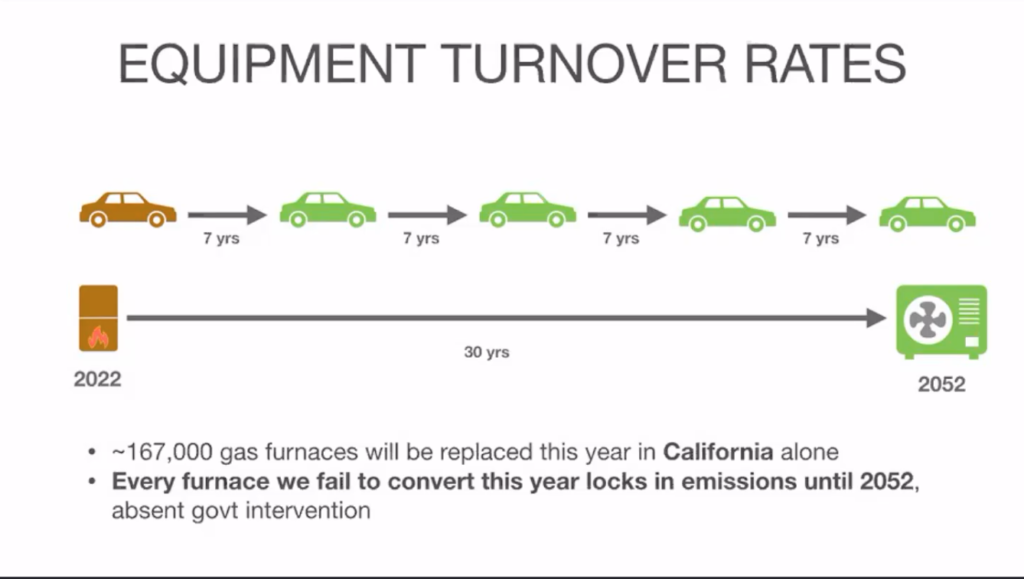Whether we are talking about replacing gas-powered vehicles, furnaces, or stoves, or adding solar to your roof — one of the biggest challenges we face is simply the math of the turnover or lifespan of equipment, appliances, roofs, and vehicles.
A few days ago I saw this slide (below) in a California Energy Commission presentation which powerfully illustrates this challenge. For a homeowner who replaces their gas furnace today with another gas furnace, it may be another 30 years before they (or the next owner) need to replace the furnace.

Or solar. About 10 years ago we replaced our shake roof which was more than 20 years old, and then about a year later or so we added solar panels. But a homeowner with say 5-7 years of life left on their roof is probably not going to add solar panels today as they don’t want the cost and complexity of having to remove and re-install the panels when they eventually replace their roof.
Which brings me to vehicles. While the “average” ownership of consumer passenger vehicles in the US may be 7 years, the average age of vehicles on the road in the US is 11 years. And a massive 25% of vehicles on the road in the US are 16 years or older — which means many people are driving 20-25 year-old cars and trucks. So whether someone is replacing their 3, 7, 11, 16, or 25 year-old vehicle — if they don’t replace it with a BEV in 2022, the next opportunity for them to replace the vehicle may not be until 2029, or 2033 or 2038, or even 2047.
The implications are two fold:
1) Not everyone wants or can afford a new BEV today — or a BEV simply may not fit their needs (impact of towing on range), or a BEV may not actually be the best way to reduce GHGs where they live based on the grid energy source. So as I frequently argue — we need an eclectic powertrain approach in parallel. For those people who don’t buy a BEV with their next purchase, we need to get them into a regular hybrid, PHEV, or higher-MPG vehicle.
2) We have to take a “subtraction by subtraction” approach and use incentives to replace old gas guzzlers rather than put these incentives toward higher-cost new EVs that have greater demand than supply. Each year in the US consumers purchase about 2.5 times more used vehicles than they do new vehicles.
Unfortunately, because EVs are still so new and we didn’t see any significant volume of sales until the last few years, it will be another 10 years before there is a large supply of affordable used EVs for people to purchase. Without some government incentives that encourage upper-income households to turnover their EVs early + significant incentives for moderate income households to buy used EVs – our transition to mostly electric vehicles is going to take until about 2070. Time and turnover are not on our side.


